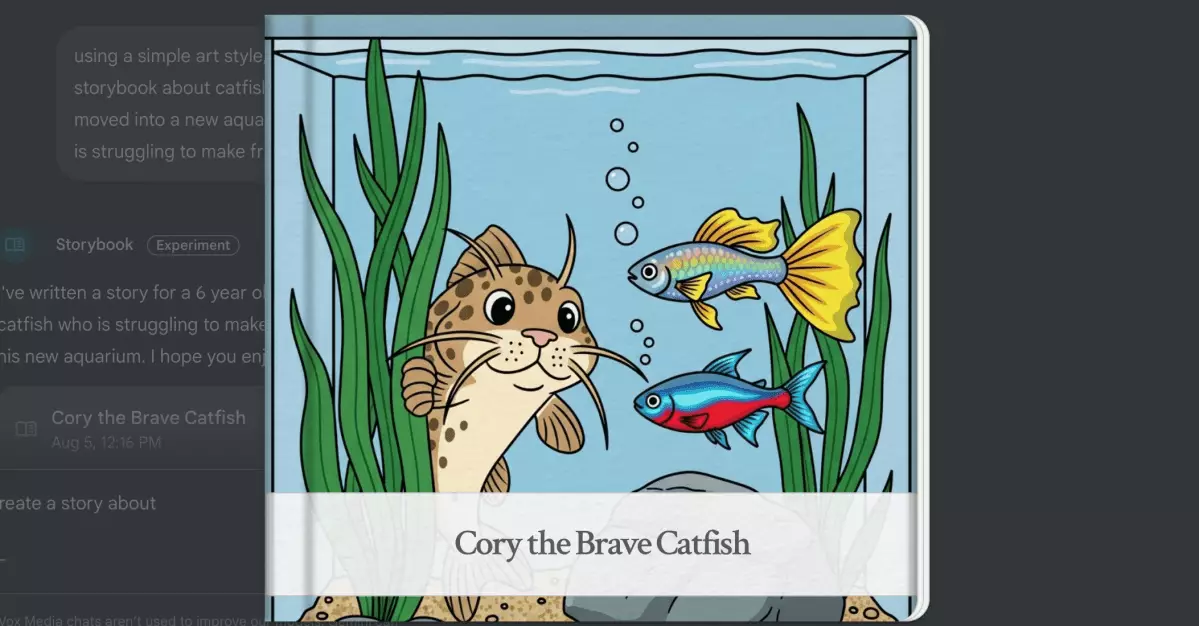The advent of AI-driven storytelling tools marks a pivotal shift in how we approach creative projects. Google’s recent introduction of its Gemini AI chatbot’s “Storybook” feature offers users the tantalizing promise of instant, customizable, illustrated stories. This innovation hints at a future where anyone can craft personalized narratives adorned with diverse art styles—from anime to claymation—simply by describing what they envision. While the appeal of democratized storytelling is undeniable, the reality reveals a labyrinth of technical quirks and inconsistencies that challenge the reliability of AI as a true creative collaborator.
Initially, one might consider these AI tools as accessible gateways to ignite imagination, especially for parents, educators, or amateur storytellers lacking artistic skills. However, the experience is often marred by AI-generated anomalies that can undermine the very purpose of creativity—coherence and aesthetic harmony. It’s not merely about generating images or text; it’s about producing a seamless, engaging narrative flow that resonates on an emotional level. Unfortunately, current AI implementations, including Google’s Gemini, still grapple with understanding nuance, leading to bizarre visual glitches like a human arm on a fish or scenes that resemble cartoon crime scenes. Such inconsistencies, although minor or humorous at times, highlight the discrepancy between AI’s algorithmic proficiency and the subtleties of human storytelling.
The Limitations of AI Art Styles and Personalized Inputs
One of the most compelling features unveiled by Google’s “Storybook” is its flexibility in art styles. Requesting a story illustrated in anime, comic, or claymation formats adds a layer of customization previously unavailable at such scale. This empowers users to tailor their narratives to specific aesthetic preferences, potentially fostering more meaningful engagement. Yet, this flexibility is undercut by AI’s current limitations in accurately interpreting and executing these stylistic requests.
For example, uploading an original drawing—a cartoon cat—did not yield an image aligned with the user’s artistic vision. Instead, AI struggled to translate the input into a style consistent with the sketch, often resulting in inconsistent character designs or unintended visual anomalies. This indicates that, while the promise of controlling artistic output through uploads is intriguing, the technology still lacks the finesse needed for true personalization. The gap between user intent and AI-generated visuals underscores a fundamental challenge: AI systems interpret rather than truly understand human artistry, leading to outputs that sometimes feel arbitrary or disjointed.
Inconsistencies and ‘AI-Hiccups’: An Ongoing Challenge
A recurring critique among early users is the presence of “AI hiccups”—images with strange proportions, misplaced objects, or surreal details that defy logic but often go unnoticed or dismissed as quirks. These glitches can disrupt narrative immersion, especially when used in children’s stories where coherence is paramount. For instance, an illustration depicting spaghetti sauce as a crime scene, or a character with elongated limbs, can distract or even confuse young readers.
Moreover, some generated stories exhibit subtly distorted visuals, such as mismatched backgrounds or characters facing the wrong direction. These imperfections reveal how machine learning models, despite impressive progress, still fall short of mastering the subtleties of visual storytelling. Interestingly, even within Google’s own promotional videos, quirks surface—such as a woman building a spaceship with an indistinct tool—highlighting how AI’s creative imperfections are often visible even in polished demonstrations.
While these anomalies may seem trivial or humorous, they expose the current boundaries of AI in complex creative tasks. As these tools continue to evolve, the hope is that future iterations will reduce such errors, resulting in more polished, cohesive stories that skip the distracting glitches.
The Future of AI-Generated Content: Promise, Perils, and Personal Responsibility
Despite its flaws, the potential embedded within AI storytelling tools is undeniable. They open doors for rapid prototyping, educational storytelling, and accessible creative expression. Yet, as critics and enthusiasts alike acknowledge, these tools are far from perfect and require careful oversight. The reliance on AI-generated content demands a critical eye—what comes out might be fantastic, flawed, or downright bizarre.
Ultimately, the journey toward perfecting such technology hinges on balancing automation with artistry. Should we place blind faith in algorithms to tell compelling stories, or should we see AI as an aid rather than a replacement? From my perspective, AI’s role should be that of an assistant—augmented tools that inspire and complement human creativity, not supplant it. As the technology matures, addressing its current shortcomings will be essential in crafting stories that are not only functional but also emotionally resonant and visually delightful.
The ongoing development of AI storytelling remains an exciting frontier—one filled with extraordinary possibilities and frustrating imperfections. Only by critically engaging with these tools can we shape them into truly enriching creative partners.


Leave a Reply